More Resources
- Foundation Design and Analysis: Deep Foundations, Driven Pile Bearing Capacity (for ASD Methods)
- Foundation Design and Analysis: AASHTO LRFD Method
- Design and Construction of Driven Pile Foundations, 2016 Edition. This topic is spread out between the two volumes.
Overview
Engineers have always designed structures with uncertainty in mind, thus it is not permissible to design to the edge of “the envelope,” or put another way to the upper bound solution. Some of that uncertainty is due to Isaacs’ “factor of ignorance” concerning events that are difficult to foresee. Other problems are due to the fact that, for driven piles at least, the ultimate capacity can be the plunging failure of the pile, and we need to stay away from that. There are two methods we use to deal with these problems: ASD (allowable stress design) and LRFD (load and resistance factor design.)
ASD (Allowable Stress Design)
This is the older and simpler of the two and has been used by engineers for many years. It is based on the following relationship:
(1)
where
factor of safety
ultimate capacity
allowable capacity
Commonly accepted factors of safety are listed here:
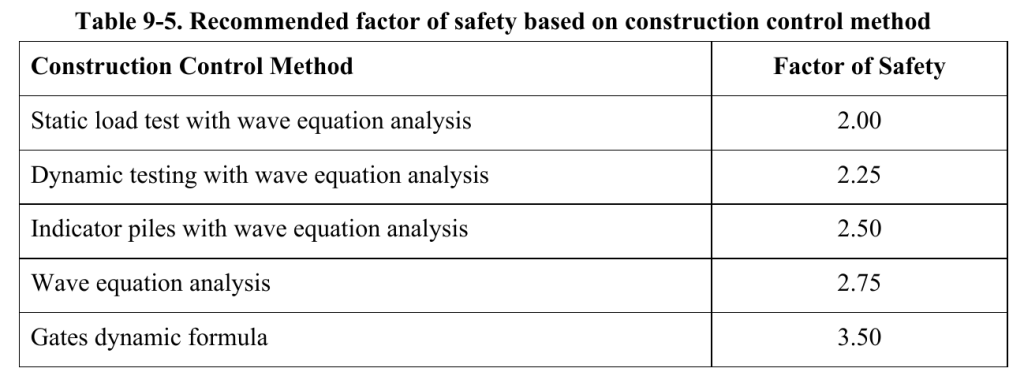
The factors of safety are based primarily on both the initial design method and the verification methods, or a combination of the two. The better both are, the lower the factor of safety can be. In addition to “bearing capacity,” settlement needs to be checked; job specific conditions can dictate a lower factor of safety based on the need to limit settlements.
It’s also worth noting that for drivability studies the ultimate capacity is always used, both in ASD and LRFD. Why is this? Because during pile driving our objective is to induce failure in the soil and downward movement of the pile!
LRFD Methods
These are becoming the “state of the art” methods for dealing with uncertainty in design, although there are objections to their use. The theory behind them also goes against much of what passes as truth in our society, which I deal with in Teaching Secular Blasphemy. Because of their complexity, it was my practice to teach the actual physics of the process using ASD and then deal with LRFD separately.

The basic concept is shown at the right. There are two aspects of foundation design: the loads on the foundation and the foundation’s capacity to resist those loads. The bell curves shown at the right represent the probability of a load or resistance taking place. Note that the failure shaded area is unavoidable; eliminating it is impossible. In any case by LRFD a foundation is to be designed so that
(2)
where
load factor for a particular type of load. It is based on the possibility of its occurrence and the severity of that occurrence
load of a particular type
resistance factor
resistance against a certain load type

Obviously the greater the inequality the smaller the failure zone; systems of load and resistance factors have as an underlying assumption a certain “distance” between the two. The system I taught in my classes is the AASHTO system as applied to driven piles in Design and Construction of Driven Pile Foundations, 2016 Edition. It is complex but applicable to this type of structure.
First, the AASHTO codes for the various types of loads:
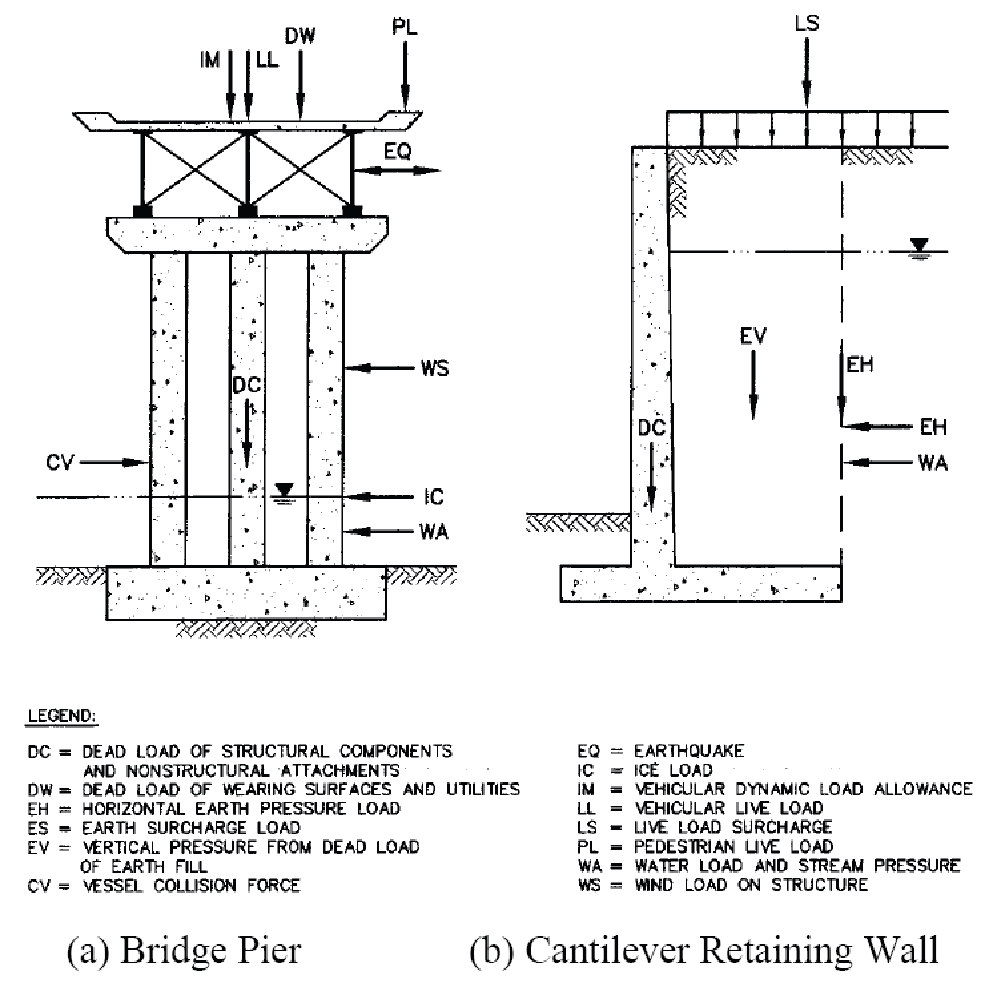

AASHTO’s method of applying these is more complicated than is shown in Equation (2); this is discussed in Design and Construction of Driven Pile Foundations, 2016 Edition. At this point we introduce two types of load states and factors:
- Strength Limit States
- Involve the total or partial collapse of the structure
- Include bearing capacity failure, sliding and overall instability
- Service Limit States
- Affect the function of the structure under regular service conditions
- Include excessive settlement, excessive lateral deflections, and structural deterioration of the foundation or excessive vibration
There are several limit states under the AASHTO system which are as follows:
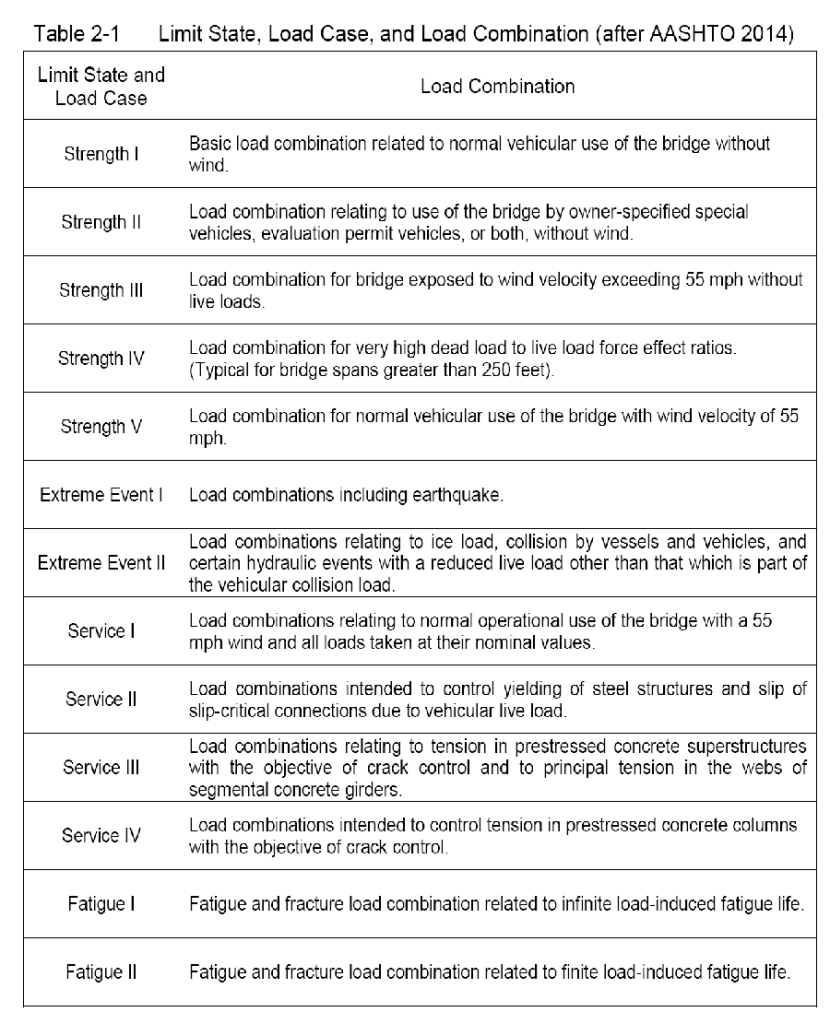
Some of the factors that go with these are as follows:
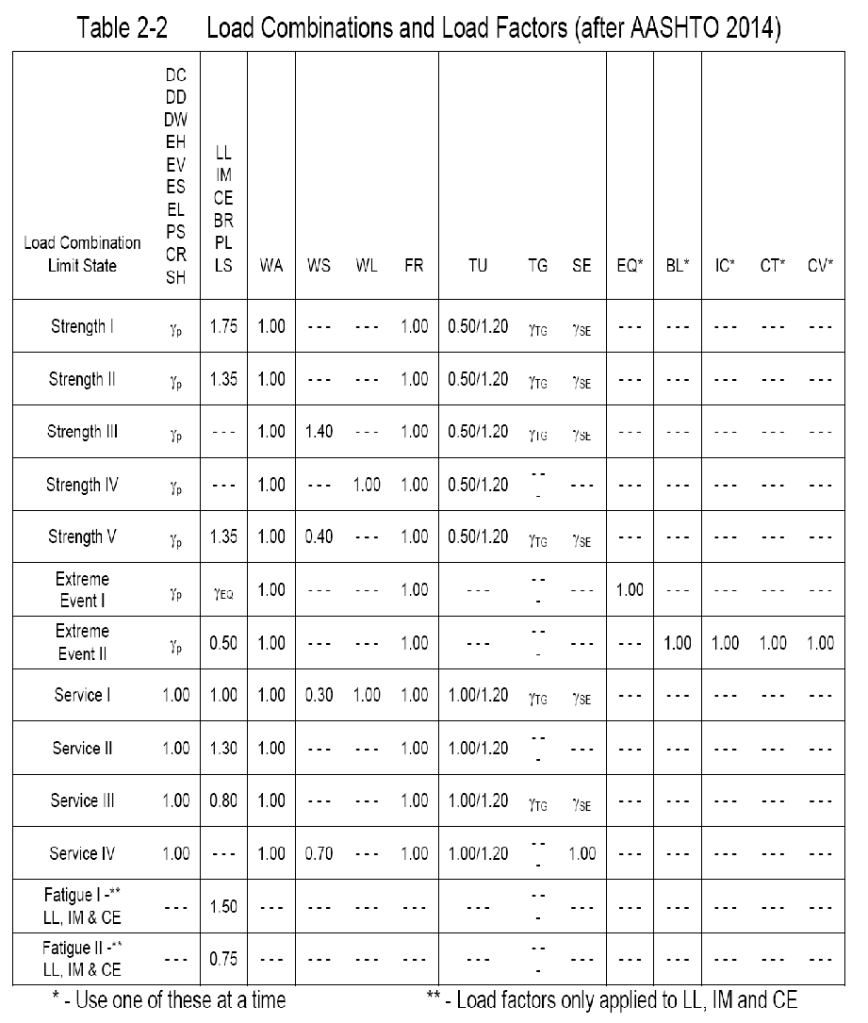

The simplest way to show how these are used is shown in the example below.

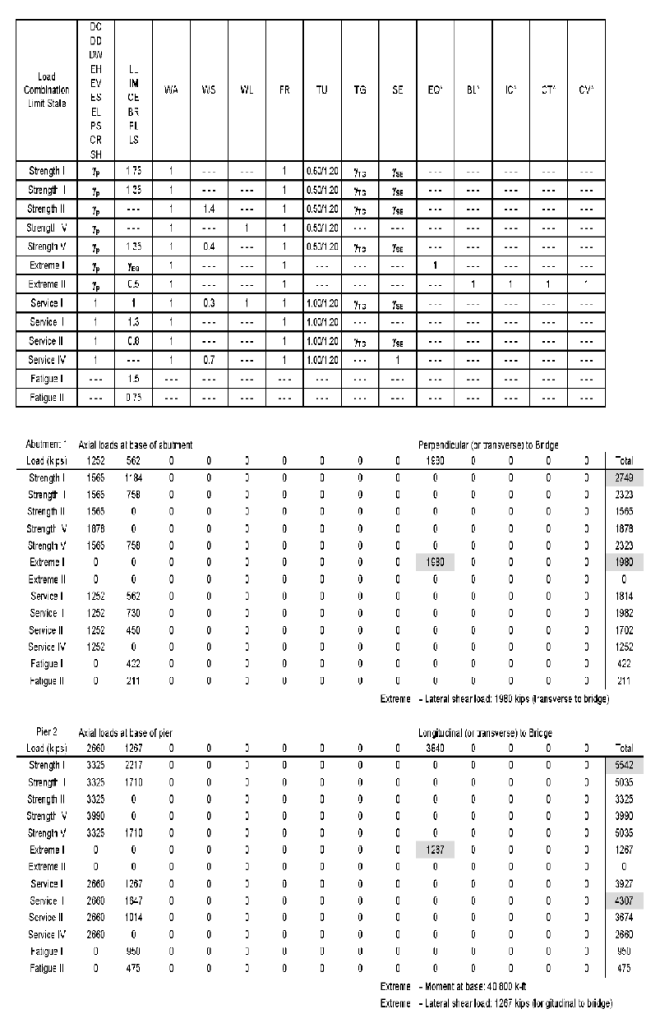
Turning to the resistance factors, for driven piles we have the following:



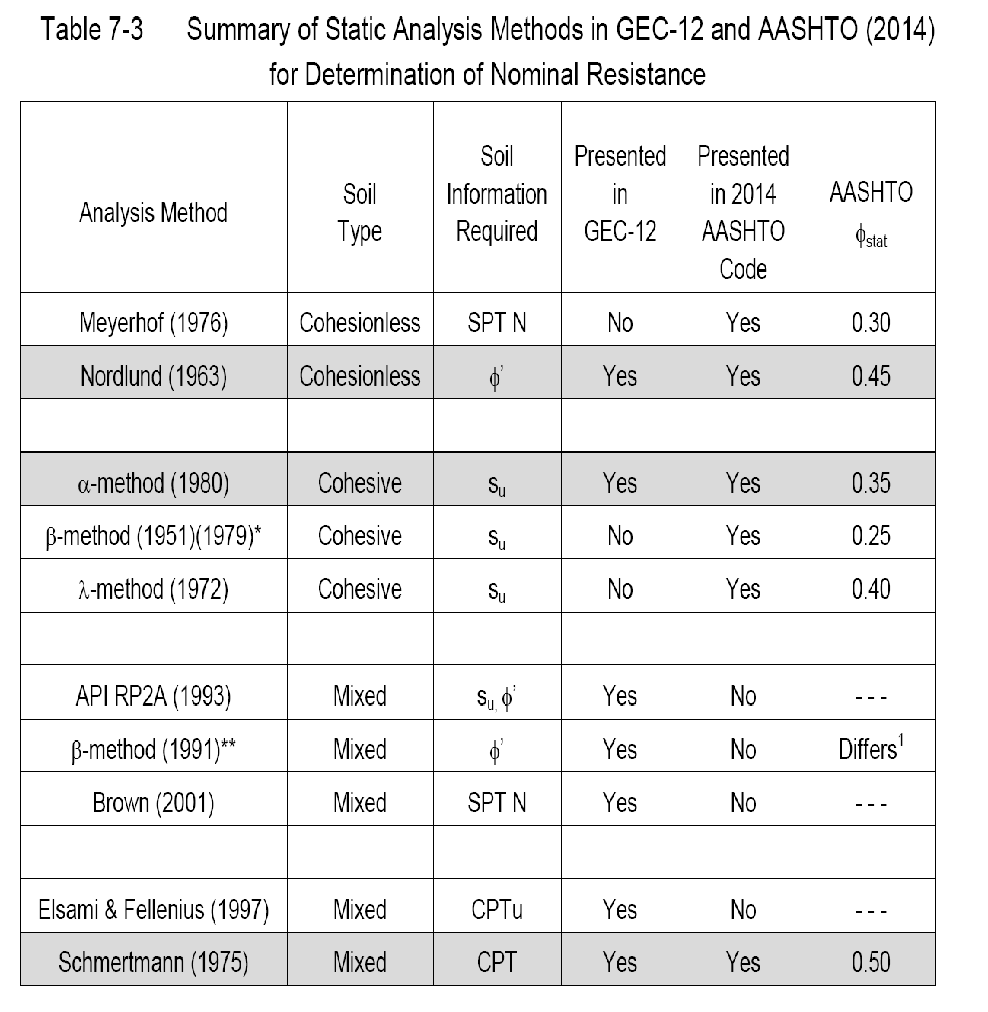

A spreadsheet which shows how these work is given here. Because of the complexity of the method, I would strongly recommended you view my video on the example given in Foundation Design and Analysis: AASHTO LRFD Method. The material in its complete form is contained in Design and Construction of Driven Pile Foundations, 2016 Edition.

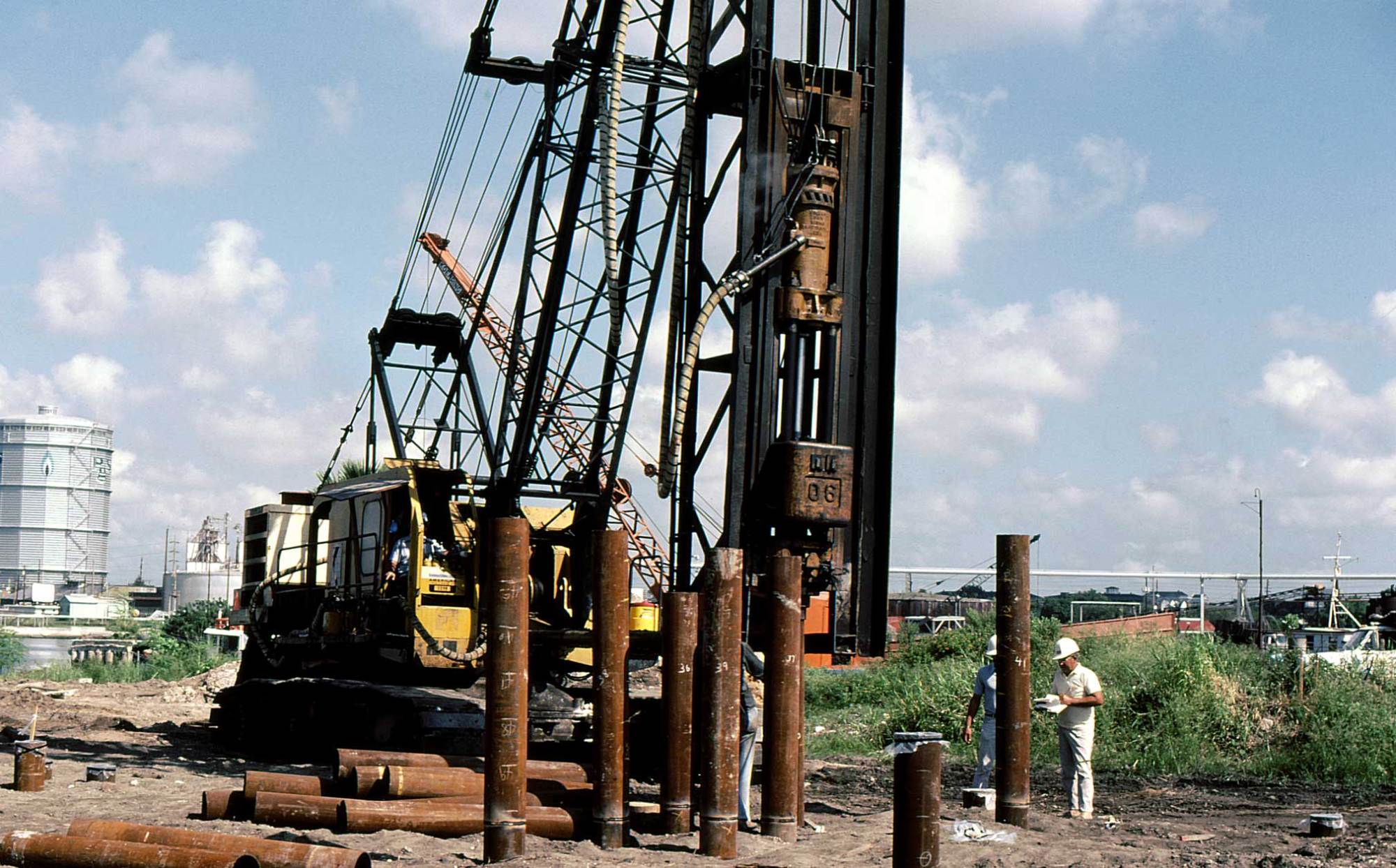

2 thoughts on “Driven Pile Design: ASD and LRFD Methods”